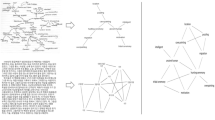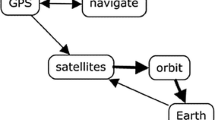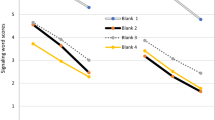Abstract
This quasi-experimental investigation describes the influence of text signals on second language expository science text comprehension. In two course sections, mixed proficiency Korean English language learners (n = 88) read one of two print-based English expository text passage versions. Participants in one section (n = 44) were given a version with interesting but non-important subtopics (NIS) underlined, while participants in the other section (n = 44) were given an alternate version with the same number of substantively important subtopics (SIS) underlined. Participants read the text passage and created a visual map of the text, and then completed a comprehension posttest that measured global inferences (all in English). Analysis of variance of the comprehension posttest data revealed significant differences for the two main factors, proficiency level (Low or High) and text signal condition (NIS or SIS), and for the interaction of proficiency and text signal condition; with Cohen effect sizes, d = Low-NIS (.16) < High-NIS (.56) < Low-SIS (.74) < High-SIS (1.37). Descriptively, both headings and important subtopic terms predominated in the SIS maps, but only non-important subtopic terms and not headings predominated in the NIS maps. Further, the visual map forms, as measured by vector pattern matching and by graph centrality, were also substantially different. Compared to the NIS maps, on average the SIS map forms were more relational and more like the expert’s map, while the NIS map forms were more linear, and showed a primacy effect. These results suggest that coherent text signals in these print-based readings strongly influenced bilinguals’ science expository text comprehension.





Similar content being viewed by others
References
Barry, S., & Lazarte, A. (2000). A comparison of first and second language readers’ situation models as evidenced in a recall task. (ERIC Document Reproduction Service No. ED 441 219) http://files.eric.ed.gov/fulltext/ED441219.pdf.
Cashen, V. M., & Leicht, K. L. (1970). Role of the isolation effect in a formal educational setting. Journal of Educational Psychology, 61(6p1), 484.
Clariana, R. B. (2010). Deriving group knowledge structure from semantic maps and from essays. In D. Ifenthaler, P. Pirnay-Dummer, & N. M. Seel (Eds.), Computer-based diagnostics and systematic analysis of knowledge (pp. 117–130). New York: Springer.
Clariana, R. B., Draper, D., & Land, S. M. (2011). An automated measure of group knowledge structure convergence. In annual meeting of the AECT International Convention. Retrieved September (Vol. 22, p. 2014).
Clariana, R. B., Engelmann, T., & Yu, W. (2013). Using centrality of concept maps as a measure of problem space states in computer-supported collaborative problem solving. Educational Technology Research and Development, 61(3), 423–442.
Clariana, R. B., Rysavy, M. D., & Taricani, E. (2015). Text signals influence team artifacts. Educational Technology Research and Development, 63(1), 35–52.
Clariana, R. B., Wolfe, M. B., & Kim, K. (2014). The influence of narrative and expository lesson text structures on knowledge structures: Alternate measures of knowledge structure. Educational Technology Research and Development, 62(5), 601–616.
Crouse, J. H., & Idstein, P. (1972). Effects of encoding cues on prose learning. Journal of Educational Psychology, 63(4), 309.
Degand, L., & Sanders, T. (2002). The impact of relational markers on expository text comprehension in L1 and L2. Reading and Writing, 15(7–8), 739–757.
Fecteau, M. L. (1999). First-and second-language reading comprehension of literary texts. The Modern Language Journal, 83(4), 475–493.
Fesel, S. S., Segers, E., Clariana, R. B., & Verhoeven, L. (2015). Quality of children’s knowledge representations in digital text comprehension: Evidence from pathfinder networks. Computers in Human Behavior, 48, 135–146.
Fowler, R. L., & Barker, A. S. (1974). Effectiveness of highlighting for retention of text material. Journal of Applied Psychology, 59(3), 358.
Gernsbacher, M. A. (1991). Cognitive processes and mechanisms in language comprehension: The structure building framework. In G. H. Bower (Ed.), The psychology of learning and motivation (Vol. 27, pp. 217–263). San Diego: Academic Press.
Hartley, J., Bartlett, S., & Branthwaite, A. (1980). Underlining can make a difference—sometimes. The Journal of Educational Research, 73(4), 218–224.
Izumi, S. (2002). Output, input enhancement, and the noticing hypothesis. Studies in second language acquisition, 24(04), 541–577.
Jonassen, D. H. (1985). The technology of text: Principles for structuring, designing, and displaying text (Vol. 2). Englewood Cliffs: Educational Technology.
Jonassen, D. H., Beissner, K., & Yacci, M. (1993). Structural knowledge: techniques for representing, conveying, and acquiring structural knowledge. Hillsdale, NJ: Lawrence Erlbaum Associates.
Kim, M. (2012). Cross-validation study on methods and technologies to assess mental models in a complex problem solving situation. Computers in Human Behavior, 28(2), 703–717.
Kim, K., & Clariana, R. B. (2015). Knowledge structure measures of reader’s situation models across languages: Translation engenders richer structure. Technology, Knowledge and Learning, 20, 249–268.
Kintsch, W. (1988). The role of knowledge in discourse comprehension: a construction- integration model. Psychological Review, 95(2), 163–182.
Laborda, J. G. (2009). Building a validity argument for the Test of English as a Foreign Language™. ELT Journal, 63(3), 291–294.
LaBrozzi, R. M. (2016). The effects of textual enhancement type on L2 form recognition and reading comprehension in Spanish. Language Teaching Research, 20, 75–91.
Lambiotte, J. G., Dansereau, D. F., Cross, D. R., & Reynolds, S. B. (1989). Multi-relational semantic maps. Educational Psychology Review, 1(4), 331–367.
Lee, S. K. (2007). Effects of textual enhancement and topic familiarity on Korean EFL students’ reading comprehension and learning of passive form. Language Learning, 57(1), 87–118.
Lee, J. W., & Schallert, D. L. (1997). The relative contribution of L2 language proficiency and L1 reading ability to L2 reading performance: A test of the threshold hypothesis in an EFL context. TESOL Quarterly, 31(4), 713–739.
Lemarié, J., Lorch, J. R. F., & Péry-Woodley, M. P. (2012). Understanding how headings influence text processing. Discours. Revue de linguistique, psycholinguistique et informatique, (10).
Leow, R. P. (2001). Do learners notice enhanced forms while interacting with the L2?: An online and offline study of the role of written input enhancement in L2 reading. Hispania, 84, 496–509.
Li, S. C., Pow, J. W. C., & Cheung, W. C. (2015). A delineation of the cognitive processes manifested in a social annotation environment. Journal of Computer Assisted learning, 31, 1–13.
Li, P., Zhang, F., Tsai, E., & Puls, B. (2014). Language history questionnaire (LHQ 2.0): A new dynamic web-based research tool. Bilingualism: Language and Cognition, 17(03), 673–680.
Lorch, R., Lemarié, J., & Grant, R. (2011). Signaling hierarchical and sequential organization in expository text. Scientific Studies of Reading, 15(3), 267–284.
Lorch, R. F., Jr., & Lorch, E. P. (1995). Effects of organizational signals on text-processing strategies. Journal of Educational Psychology, 87(4), 537.
Lorch, R. F., Lorch, E. P., Ritchey, K., McGovern, L., & Coleman, D. (2001). Effects of headings on text summarization. Contemporary Educational Psychology, 26(2), 171–191.
Meyer, B. J., Brandt, D. M., & Bluth, G. J. (1980). Use of top-level structure in text: Key for reading comprehension of ninth-grade students. Reading Research Quarterly, 16, 72–103.
Meyer, B. J. F., Ray, M. N., & Middlemiss, W. (2012). Children’s use of comparative text signals: The relationship between age and comprehension ability. Discours[Enligne]. Retrived from http://discours.revues.org/8637.
Meyer, B. J., & Rice, G. E. (1983). Learning and memory from text across the adult life span. In J. Fine & R. O. Freedle (Eds.), Developmental studies in discourse (pp. 291–306). Norwood, NJ: Ablex.
Nist, S. L., & Hogrebe, M. C. (1987). The role of underlining and annotating in remembering textual information. Literacy Research and Instruction, 27(1), 12–25.
Overstreet, M. H. (2002). The effect of textual enhancement on second language learner reading comprehension and form recognition (Doctoral dissertation, University of Illinois at Urbana-Champaign).
Perfetti, C. A. (1989). There are generalized abilities and one of them is reading. In L. B. Resnick (Ed.), Knowing, learning, and instruction: Essays in honor of Robert Glaser (pp. 307–336). Hillsdale, NJ: Lawrence Erlbaum.
Pirnay-Dummer, P., & Ifenthaler, D. (2010). Automated knowledge visualization and assessment. In D. Ifenthaler, P. Pirnay-Dummer, & N. M. Seel (Eds.), Computer-based diagnostics and systematic analysis of knowledge. New York: Springer.
Ritchey, K., Schuster, J., & Allen, J. (2008). How the relationship between text and headings influences readers’ memory. Contemporary Educational Psychology, 33(4), 859–874.
Ryan, C. (2013). American Community Survey Reports: Language use in the United States: 2011. Retrieved from https://www.census.gov/prod/2013pubs/acs-22.pdf.
Shook, D. J. (1994). FL/L2 Reading, grammatical information, and the input-to-intake phenomenon. Applied Language Learning, 5(2), 57–93.
Spector, J. M., Johnson, T. E., & Young, P. A. (2015). An editorial on replication studies and scaling up efforts. Education Technology Research and Development, 63, 1–4.
Spyridakis, J. H., & Standal, T. C. (1987). Signals in expository prose: Effects on reading comprehension. Reading Research Quarterly, 22(3), 285–298.
van Dijk, T. A., & Kintsch, W. (1983). Strategies in discourse comprehension. New York: Academic Press.
van Hell, J. G., & Kroll, J. F. (2013). Using electrophysiological measures to track the mapping of words to concepts in the bilingual brain: A focus on translation. In J. Altarriba & L. Isurin (Eds.), Memory, language, and bilingualism: Theoretical and applied approaches. New York: Cambridge University Press.
Villalon, J., & Calvo, R. A. (2011). Concept maps as cognitive visualizations of writing assignments. Educational Technology & Society, 14(3), 16–27.
Wilks, C., Meara, P., & Wolter, B. (2005). A further note on simulating word association behaviour in a second language. Second Language Research, 21(4), 359–372.
Wong, W. (2003). Textual enhancement and simplified input: Effects on L2 comprehension and acquisition of non-meaningful grammatical form. Applied Language Learning, 13, 109–132.
Zareva, A. (2007). Structure of the second language mental lexicon: how does it compare to native speakers’ lexical organization? Second Language Research, 23(2), 123–153.
Zareva, A., & Wolter, B. (2012). The ‘promise’of three methods of word association analysis to L2 lexical research. Second Language Research, 28(1), 41–67.
Zwaan, R. A., & Radvansky, G. A. (1998). Situation models in language comprehension and memory. Psychological Bulletin, 123(2), 162.
Acknowledgments
I thank my advisor and co-author of this paper, Dr. Roy B. Clariana, for his assistance and comments that greatly improved the manuscript (You are the best ever advisor). I also thank “anonymous” reviewers for their so-called insights.
Author information
Authors and Affiliations
Corresponding author
Ethics declarations
Conflict of Interest
The authors declare that they have no conflict of interest.
Appendix
Appendix
The Cave of Lascaux text passage with the NIS terms shown within brackets and SIS terms shown with underlines.
Lascaux Cave Paintings
In Southwest France in the 1940s, playing children discovered Lascaux Grotto, a series of [narrow cave chambers] that contain huge prehistoric paintings of animals. Many of these beasts are as large as 16 feet (almost 5 meters). Some follow each other in solemn parades, but others swirl about, sideways and upside down. The animals are bulls, wild horses, reindeer, bison, and mammoths outlined with charcoal and painted mostly in reds, yellow, and browns. Scientific analysis reveals that the colors were derived from ocher and other iron oxides ground into a fine powder. Methods of applying color varied: some colors were brushed or smeared on rock surfaces and others were blown or sprayed. It is possible that [tubes made from animal bones] were used for spraying because hollow bones, some stained with pigment, have been found nearby.
One of the most puzzling aspects of the paintings is their location. Other rock paintings—for example, those of Bushmen in South Africa—are either located [near cave entrances or completely in the open]. Cave paintings in France and Spain, however, are in recesses and caverns far removed from original cave entrances. This means that artists were forced to work in cramped spaces and without sources of natural light. It also implies that whoever made them did not want them to be easily found. Since [cave dwellers normally lived close to entrances], there must have been some reason why so many generations of Lascaux cave dwellers hid their art.
Migration Opinion
Scholars offer three related but different opinions about the mysterious origin and significance of these paintings. One opinion is that the paintings were a record of seasonal migrations made by herds. Because some paintings were made directly over others overpainting, obliterating them, it is probable that a painting’s value ended with the migration it pictured. Unfortunately, this explanation fails to explain the hidden locations, unless the migrations were celebrated with [secret ceremonies].
Hunting Opinion
Another opinion is that the paintings were directly related to hunting and were an essential part of a special preparation ceremony. This opinion holds that the pictures and whatever ceremony they accompanied were an ancient method of psychologically motivating hunters. It is conceivable that before going hunting the hunters would draw or study pictures of animals and imagine a successful hunt. Considerable support exists for this opinion because several animals in the pictures are wounded by arrows and spears. This opinion also attempts to solve the overpainting by explaining that an animal’s picture had no further use after the hunt.
Ceremonial Opinion
A third opinion takes psychological motivation much further into the realm of tribal ceremonies and mystery: the belief that certain animals assumed mythical significance as ancient ancestors or protectors of a given tribe or clan. Two types of images substantiate this theory: the strange, indecipherable geometric shapes that appear near some animals, and the few drawings of men. Wherever men appear they are crudely drawn and their bodies are elongated and rigid. Some men are in a prone position and some have bird or animal heads. Advocates for this opinion point to reports from people who have experienced a trance state, a highly suggestive state of low consciousness between waking and sleeping. Uniformly, these people experienced weightlessness and the sensation that their bodies were being stretched lengthwise. Advocates also point to people who believe that the forces of nature are inhabited by spirits, particularly shamans who believe that an animal’s spirit and energy is transferred to them while in a trance. One Lascaux narrative picture, which shows [a man with a birdlike head] and a wounded animal, would seem to lend credence to this third opinion, but there is still much that remains unexplained. For example, where is the proof that the man in the picture is a shaman? He could as easily just be a hunter wearing a headmask. Many tribal hunters, including some (Native Americans), camouflaged themselves by wearing animal heads and hides.
Perhaps so much time has passed that there will never be satisfactory answers to the cave images, but their mystique only adds to their importance. Certainly a great art exists, and by its existence reveals that ancient human beings were not without intelligence, skill, and sensitivity.
The four headings
Lascaux cave paintings, Migration opinion, Hunting opinion, Ceremonial opinion.
The seven non-important subtopic terms (NIS)
Narrow cave, tubes, near entrances, cave dwellers, secret ceremonies, birdlike head, and Native Americans.
The seven important subtopic terms (SIS)
Paintings of animals, puzzling, location, overpainting, motivation, mystical significance, and shamans.
The eight unsignaled terms
Intelligent, ancient human, arrow and spear, trance state, France and Spain, children, and hidden (in order from high to low frequency).
Rights and permissions
About this article
Cite this article
Kim, K., Clariana, R.B. Text signals influence second language expository text comprehension: knowledge structure analysis. Education Tech Research Dev 65, 909–930 (2017). https://doi.org/10.1007/s11423-016-9494-x
Published:
Issue Date:
DOI: https://doi.org/10.1007/s11423-016-9494-x




